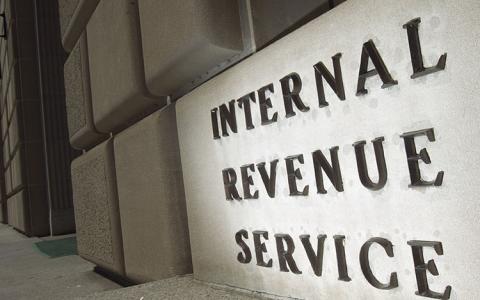
“It’s the most wonderful time of the year…” or is it? Wait, I might be experiencing some holiday season nostalgia. Most everyone I know would not sing those words to describe “Tax Season”. Tax Season instead fills people with anxiety, stress, and concern over whether the forms are filled correctly, if we have all the right documents we need, and most importantly “How much do I owe this year”! While tax law changes are forthcoming, tax rates are not at and not going to zero, so most income earners have to pay taxes.
Investment income is income – it too is subject to taxes. For many investors it is investment income that causes “surprise” tax bills. While it feels nice to see income be generated by the various investments we have made in our portfolios, unless we truly need it for immediate expenses this investment income is more of a tax burden than additive. The reason for that is that whether it is taxed at the long-term capital gains rate or whether it’s taxed as ordinary income, it still causes a “hidden cost” – a tax cost – which is most often a drag on after-tax returns. Understanding where this tax drag is coming from is the first step in mitigating it. Form 1099-DIV holds the key to unlocking these insights.
Decoding Form 1099-DIV: What every advisor should know
Form 1099-DIV reports the different types of investment income an investor has received. While it may be overwhelming to many, it is basically a series of line items that show each major investment income category.
Let’s look at key sections of Form 1099-DIV to identify what you need to be aware of:
Line 1A – Total Ordinary Dividends: The total amount of almost all dividends received, including both qualified and non-qualified dividends as well as short capital gains, which are taxed differently.
Line 1B – Qualified Dividends: A portion of Line 1A that qualifies for lower long-term capital gains tax rates.
Line 1A – 1B – Ordinary Income taxed dividend items: A little math is required to calculate what is taxed at the ordinary income tax rate by subtracting Line 1B from Line 1A. This sum—which includes interest income, short-term capital gains, and non-qualified dividends-- is taxed at ordinary income tax rates which is most often a higher corresponding tax rate.
Line 2A - Total Capital Gains Distributions: Long term capital gain distributions from mutual funds or Exchange Traded Funds (ETFs), which are taxed at lower capital gains rates. (While these are preferred to short-term capital gains, in order to minimize the overall investment tax cost, these should be minimized as well.)
Line 12 – Tax-Exempt Dividends: Typically generated from municipal bond funds, these dividends are often tax-free at the federal level, and in some cases, at the state level. This is highly preferred relative to the interest received from “taxable bonds” which is taxed at ordinary income tax rates.
Not all investment income is taxed the same way. By understanding the components, advisors can help clients identify high tax cost investments and take steps to minimize their tax liabilities. Talk to your clients about how much investment income they require for their needs. And then take the following steps to help minimize the investment income that is generating unnecessary tax cost.
Turning insights into action: Tax-smart strategies for advisors
1. Identify high tax-cost investments
Review your clients’ 1099 forms to determine which investments are generating the most taxable income. Non-qualified dividends and short-term capital gains, in particular, can significantly increase tax bills.
Review important Tax Facts and Figures
Look at the two tables below to see which tax rates are applicable. Table 1 is the ordinary income tax rate table. Table 2 is the capital gains tax rate table.
2. Taxes are a drag - Calculate the tax cost
Many investors don’t realize how much taxes are eroding their returns. Show them the impact of taxes on each category of investment income to highlight potential savings opportunities.
3. Create an action plan to make changes in your clients’ investment portfolios by implementing tax-efficient investment strategies
- Reduce exposure to higher-taxed investments: Shift assets from tax-inefficient funds to those with lower turnover and more favorable tax treatment.
- Increase tax-efficient holdings: Consider tax-managed funds and municipal bonds that generate lower taxable income.
- Use tax-loss harvesting: Offset gains by selling underperforming investments to reduce taxable income.
By adopting a long-term, tax-managed investment approach, advisors can help clients reduce tax drag and enhance their after-tax wealth.
Final thoughts: Proactive tax planning pays off
Tax season doesn’t have to be overwhelming. With the right approach, advisors can turn it into an opportunity to optimize their clients’ portfolios and minimize tax burdens. Form 1099-DIV provides the insights needed to take action— thereby helping clients keep more of what they make. By identifying tax inefficiencies and implementing strategic tax management techniques, advisors can help add even more value, ensuring investments work for their clients rather than against them.
Ready to optimize your clients’ portfolios for tax efficiency?
Let us help. Our 1099 Tax Form Guide is just one of the many tax resources we make available to you. It can help you calculate the tax bill for your client – and that may make it easier to understand the impact taxes are having on their investment returns. Our Tax Season Essentials flyer includes several strategies you can use to help your clients navigate tax season and potentially reduce tax drag. Our Tax Impact Comparison tool can quantify the tax costs in your clients’ portfolios and identify opportunities for improvements. Your regional Russell Investments team is ready and available to help you minimize your clients' tax burden and maximize their after-tax wealth.
1 U.S. Large Cap represented by Russell 1000 Index, U.S. small cap represented by Russell 2000 Index, international stocks represented by MSCI EAFE Net Index.
2 Source: Bloomberg, S&P




